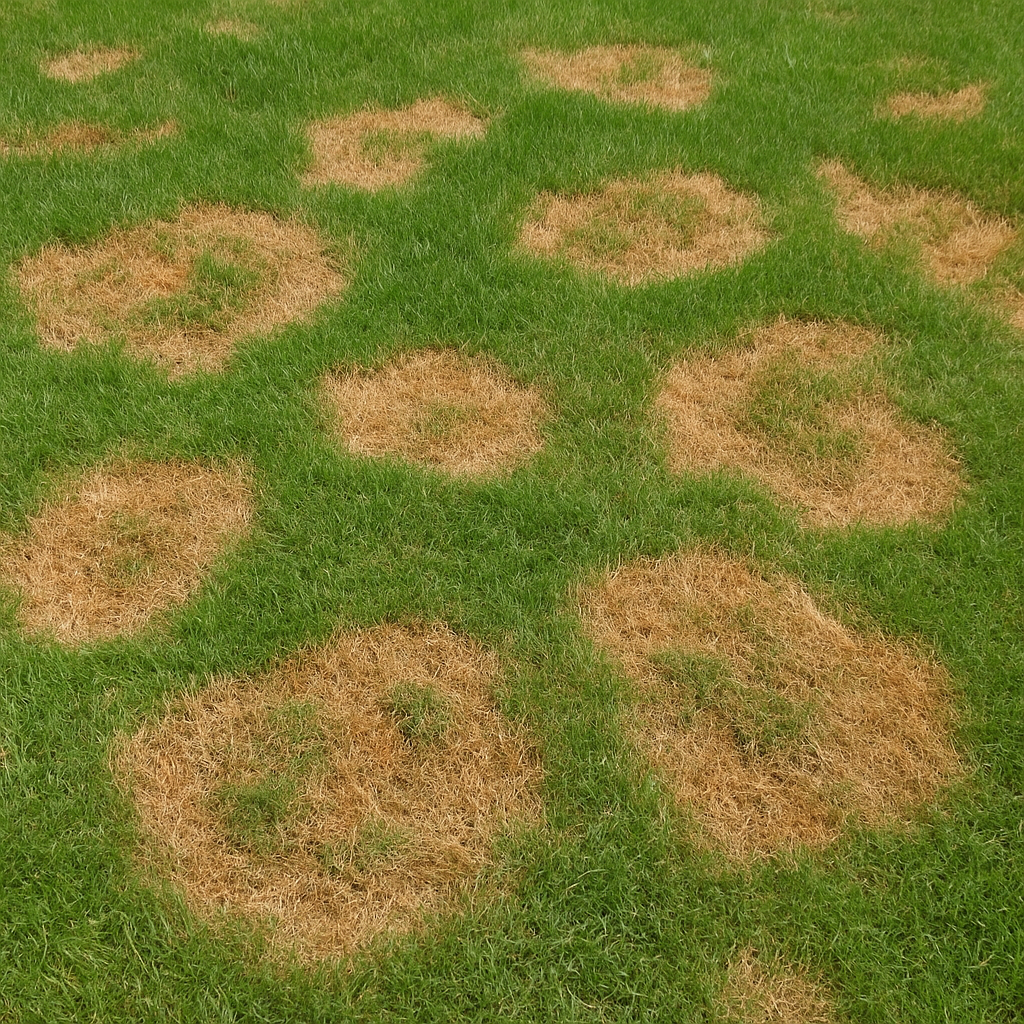
Turf Fungus Trouble? Don’t Let Brown Patch Ruin Your Lawn
In Austin, Texas, where warm days and humid nights dominate, lawns face the constant threat of turf fungus. One of the most destructive culprits is brown patch, a fungal disease that can quickly devastate popular grasses like St. Augustine and Zoysia. At Loopers Lawns, we specialize in protecting Austin lawns with professional fungicide treatments designed for Central Texas conditions.
This guide covers what brown patch is, how to identify it, and the best ways to prevent and treat it—plus how our team at Loopers Lawns can help keep your yard fungus-free.
What Is Brown Patch?
Brown patch is caused by the fungus Rhizoctonia solani. It thrives in Austin’s USDA Hardiness Zone 8b, especially during spring and fall when nighttime temperatures sit between 60–75°F and daytime highs reach 80–90°F. Austin’s clay-heavy soils, high humidity, and irrigation patterns create an ideal environment for the disease.
Brown patch appears as circular or irregular dead patches, from a few inches to several feet wide. Left untreated, it weakens turf, invites weeds and pests, and diminishes your lawn’s overall health.
How to Spot Brown Patch in Austin Lawns
Early detection is key. Look for:
- Circular patches: Brown, tan, or yellow spots 1–3 feet wide, sometimes with a gray “smoke ring.”
- Grass blade damage: Leaves turn brown at the base and pull away easily.
- Thinning turf: Grass looks sparse, especially in shaded or damp areas.
- Seasonal activity: Most active in Austin’s spring (March–May) and fall (September–November).
If you see these signs, avoid walking across affected areas and contact Loopers Lawns for a free inspection.
Why Austin Lawns Are Vulnerable
Several factors make Central Texas lawns prime targets:
- Humid nights encourage fungal growth.
- Overwatering or evening irrigation keeps grass wet too long.
- Dense grasses like St. Augustine trap moisture and limit airflow.
- Clay soils hold water, creating damp conditions.
- Excess nitrogen from fertilizer fuels rapid, fungus-prone growth.
Understanding these triggers helps homeowners adjust their lawn care practices to reduce risk.
The Damage Brown Patch Causes
Brown patch is more than just an eyesore. It:
- Destroys curb appeal with dead spots.
- Weakens grass, making it susceptible to weeds and pests like chinch bugs.
- Spreads quickly across humid lawns.
- Requires costly reseeding or resodding if left untreated.
Prompt care is essential to avoid long-term damage.
Preventing Brown Patch in Austin
Proactive lawn care can keep fungus at bay:
- Water wisely: One inch per week, early mornings only, per Austin’s water restrictions.
- Mow properly: 3–4 inches for St. Augustine, 1–2 inches for Bermudagrass.
- Aerate annually: Reduces compaction and improves drainage.
- Fertilize carefully: Use slow-release, low-nitrogen products.
- Improve drainage: Eliminate low spots or install French drains.
Loopers Lawns offers soil testing and customized plans to strengthen your turf.
Treating Brown Patch
If fungus strikes, quick action matters:
- Confirm the problem – Our team can distinguish brown patch from drought stress or pest damage.
- Apply fungicides – Products containing azoxystrobin or propiconazole work best when applied with precision.
- Adjust lawn care – Hold off watering for 48 hours after treatment and mow carefully to reduce spread.
- Repair damaged turf – Reseed or resod bare areas to restore density.
Loopers Lawns’ Fungicide Treatment Program
Our professional program is designed for Austin’s unique challenges:
- Expert diagnosis – We identify fungus and contributing factors like shade or drainage.
- Targeted fungicide applications – Preventive and curative treatments using EPA-approved products.
- Integrated care – We combine fungicide treatments with aeration, fertilization, and mowing strategies.
- Water conservation – Better soil health improves efficiency, helping customers comply with Austin’s watering rules and even qualify for city rebates.
- Ongoing support – We provide tailored maintenance advice to prevent recurrence.
With years of experience in Central Texas turf, our licensed and insured team knows how to stop brown patch before it destroys your lawn.
Extra Tips for a Fungus-Free Lawn
- Test soil pH (6.0–7.0 is ideal for St. Augustine).
- Trim trees and shrubs to improve airflow.
- Collect clippings in infected areas to prevent spreading spores.
- Watch weather patterns—fungus activity spikes after heavy rain and humid nights.
Protect Your Lawn This Season
Brown patch can ruin the look and health of your Austin lawn, but with proper prevention and expert treatment, you can keep your turf lush and green. Loopers Lawns offers a complete fungicide program tailored to Austin’s climate and soil.
Call or text (512) 720-8788 or visit www.looperslawns.com to schedule a free lawn inspection and protect your yard from turf fungus today!